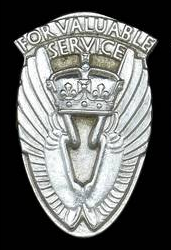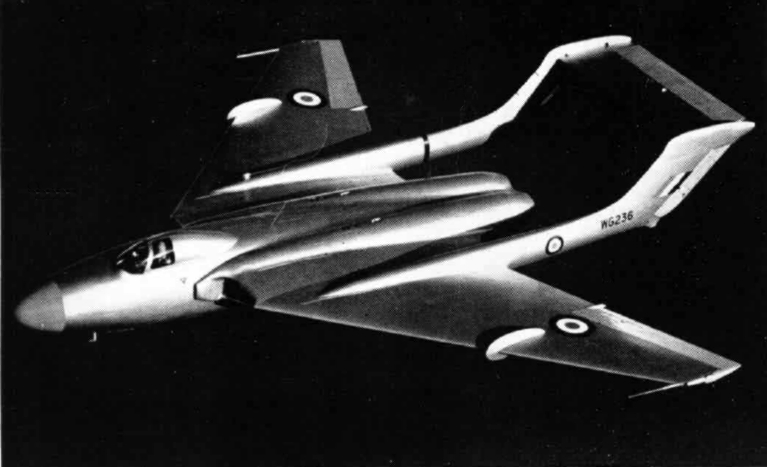
6 September 1952: At the Farnborough Air Show, an annual event held at the Royal Aircraft Establishment Farnborough, Hampshire, England, de Havilland test pilot John Douglas Derry, D.F.C., with flight test observer Anthony Max (“Tony”) Richards, put the prototype DH.110, WG236, into a supersonic dive from 40,000 feet (12,182 meters), pulling out just short of the airfield and the estimated 120,000 spectators.
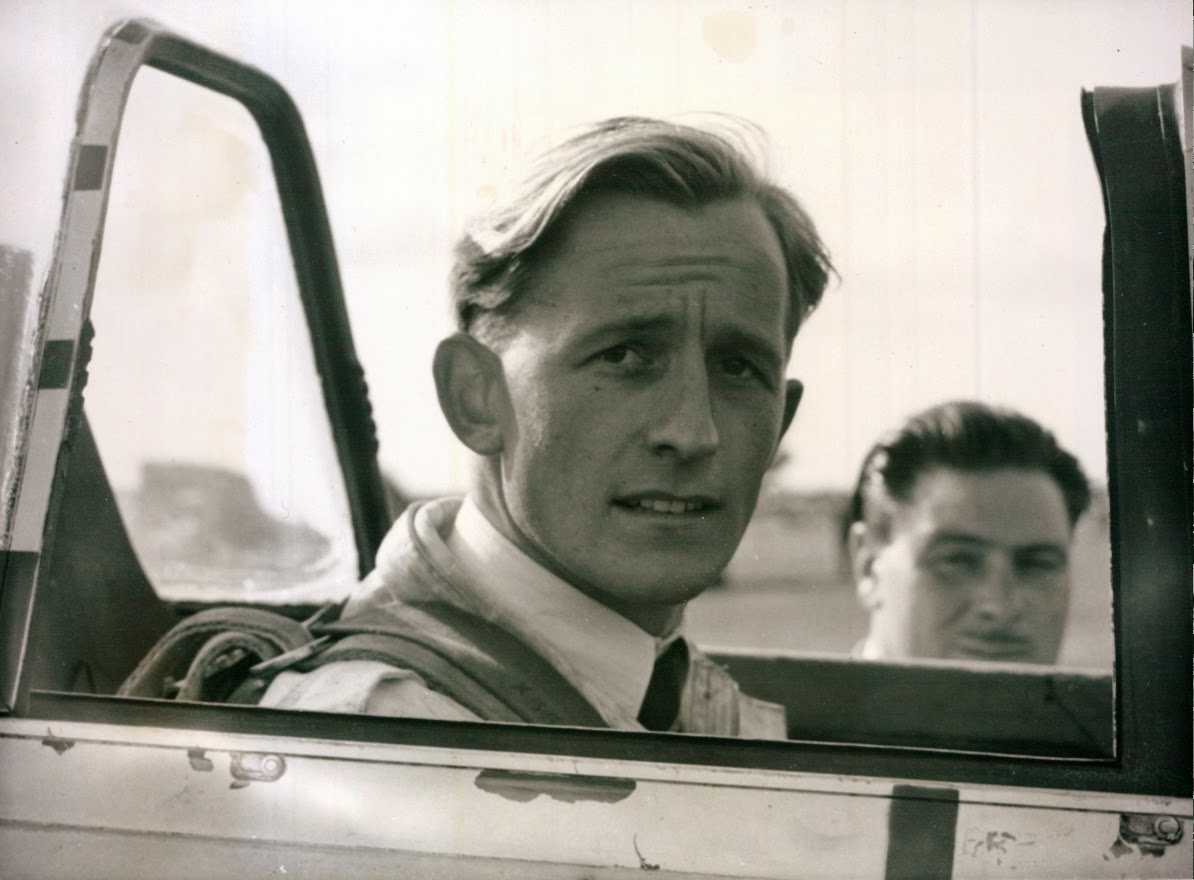
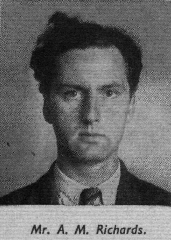
Derry then made a high-speed, low-level circuit of the airfield, and as he straightened out, the airplane broke apart and crashed onto Observation Hill.
Both Derry and Richards were killed, as were 29 spectators. Another 63 were injured.
Flight reported:
This melancholy affair has, inevitably, received wide publicity, and several inaccurate reports have been printed. A member of the staff of Flight who witnessed the accident describes it as follows: “Two small white puffs of cloud appeared in a clear patch of sky north of the airfield, presumably showing where the D.H.110 had exceeded Mach 1 in its dive. After about a minute there were two loud reports in split-second succession. The lower part of the dive must have been near-sonic, for the aircraft appeared overhead—at about 1,000–1,500ft—at almost the same instant; the supersonic ‘bangs’ had scarcely overtaken the 110, although they had evidently been produced at least 12 miles away. The aircraft flew out of sight to turn and line-up for a low flight above the main runway, which it made from the south-west at a speed estimated as 600–650 m.p.h. It then turned left into the circuit and flew back over the northern boundary at about 400ft. The break-up appeared to begin just before a steep 90-degree turn towards the enclosures. Small fragments came away from the 110, which gained height as the two Avons and the nose became detached from the airframe. One engine fell on a crowded slope behind the caravan parks, causing most of the casualties; the other landed harmlessly farther south. The nose, following the same path as the power-units, hit the grass just in front of the packed enclosure parallel with the runway and broke up. A number of small pieces landed on the runway itself while the airframe, minus tail-unit, nose and engines, dropped comparatively gently into the north-west corner of the airfield.”
—FLIGHT and AIRCRAFT ENGINEER, No. 2277, Vol. LXII. Friday, 12 September 1952, at Page 344, Column 1
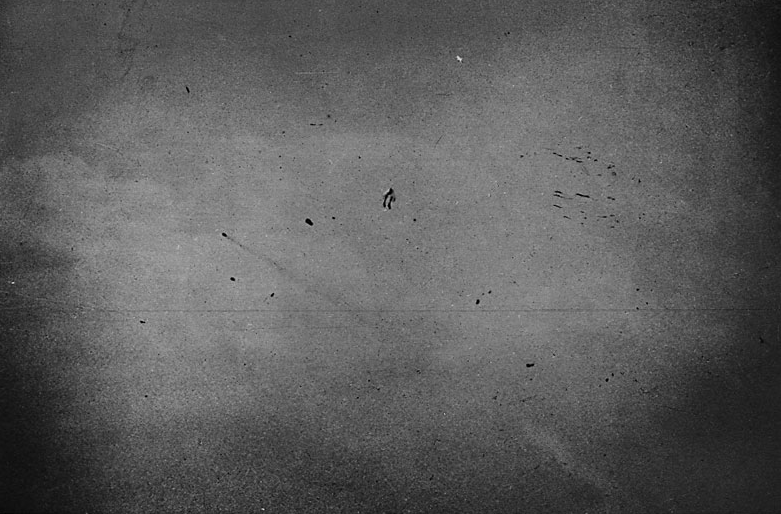
Film taken from the ground showed that as the airplane came level, the starboard outboard wing separated, followed by the port outboard wing. The aircraft pitched violently upward with an acceleration of more than 12 Gs, and the cockpit, engines and tail then disintegrated.
The DH-110’s swept wings placed the ailerons well aft of the airplane’s center of gravity. When the pilot began his bank to the right, away from the crowd, he also began to climb. This caused the wing outer panels to twist, resulting in unexpected stresses. The right wing failed in torsion. The resulting roll then caused the left wing to fail.
The flight crew was not faulted.
Changes were made in the location of the spectators and maneuvering aircraft at the airshow from that time forward.
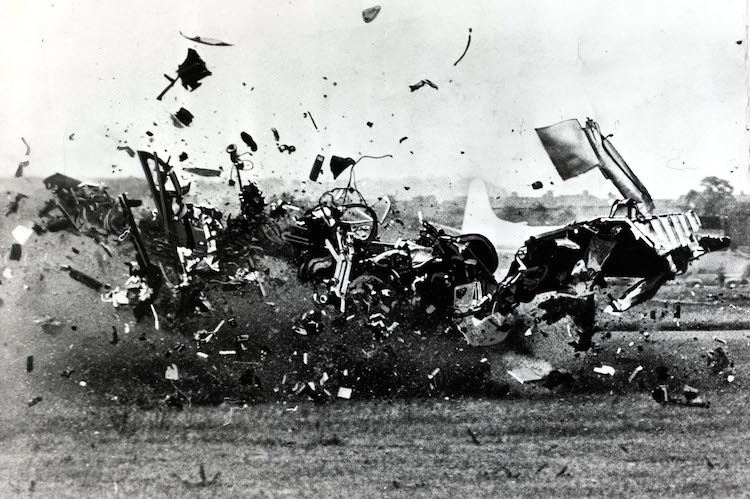
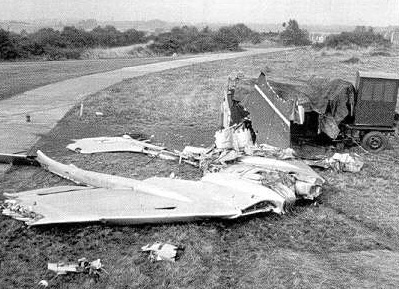
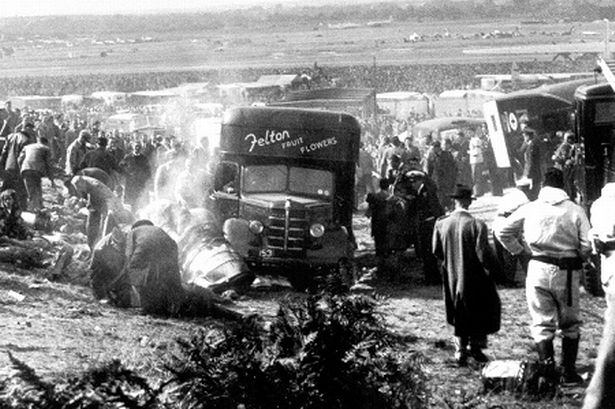
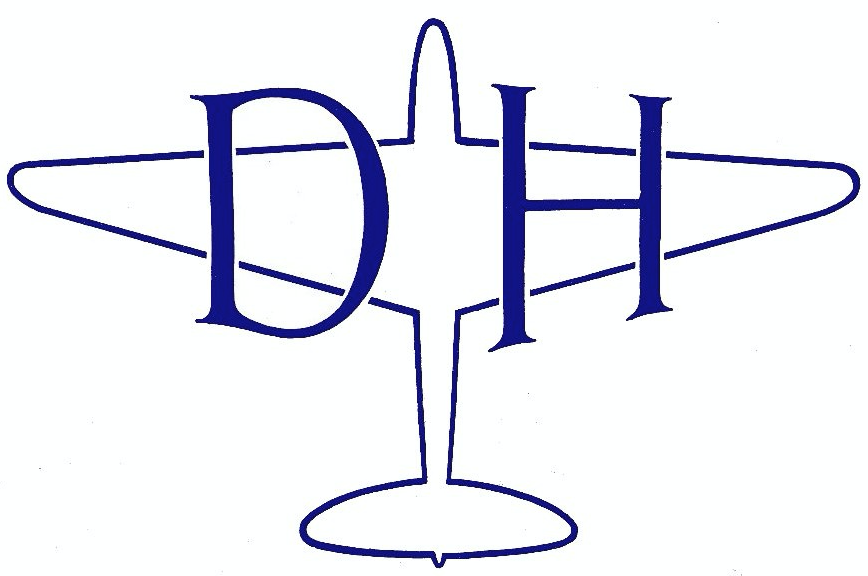
The DH.110 used the twin-tailboom configuration of de Havilland’s DH.100 Vampire and DH.112 Venom fighters, but the wings were swept to 45°.
WG236 was 51 feet, 8 inches (15.748 meters) long with a wingspan of 51 feet, 0 inches (15.545 meters) and height of approximately 11 feet (3.35 meters). Its maximum takeoff weight was 35,000 pounds (15,876 kilograms).
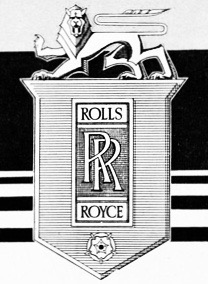
The DH.110 had a maximum speed of 610 knots (0.924 Mach) at Sea Level, and 536 knots (0.936 Mach) at 40,000 feet (12,182 meters).
Planned armament for the production fighter was four 30 millimeter ADEN cannon.
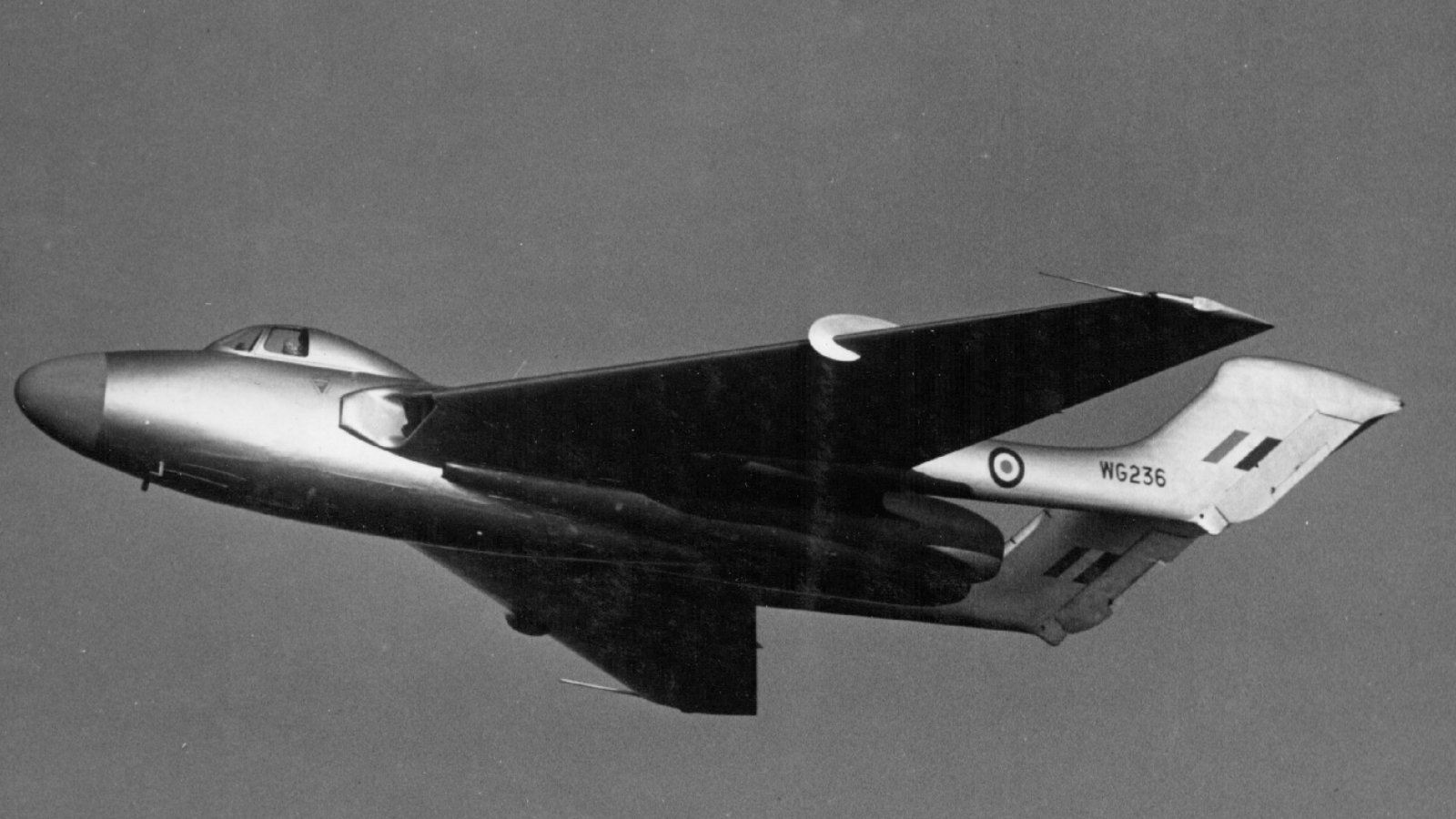
Both airmen were posthumously awarded the Queen’s Commendation for Valuable Service in the Air.
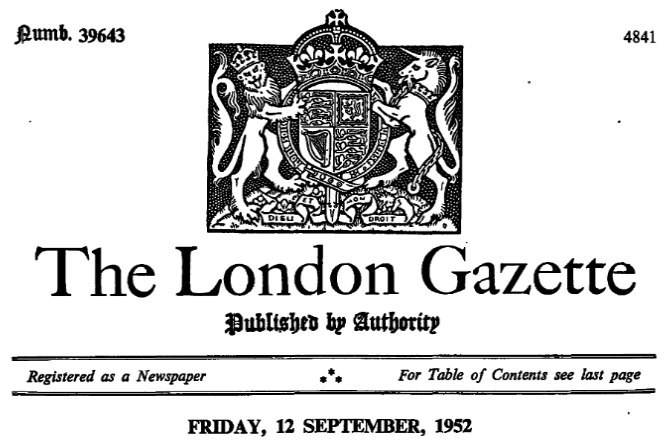
St. James’s Palace. S.W. 1
12th September, 1952
The QUEEN has been graciously pleased to give orders for the publication of the names of the persons shown below as having received an expression of Commendation for valuable service in the air:—
QUEEN’S COMMENDATIONS FOR VALUABLE SERVICE IN THE AIR.
John Douglas Derry, D.F.C. (deceased), Test Pilot, de Havilland Aircraft Company, Ltd.
Anthony Max Richards (deceased), Flight Test Observer, de Havilland Aircraft Company, Ltd.
For services when testing an experimental aircraft.
John Douglas Derry was born 5 December 1921 at Cairo, Egypt. He was one of four children of Douglas Erith Derry, M.C., M.B., Ch.B., Professor of Anatomy at the Government Medical School there, and Margaret G. Ramsay Derry.
Derry was educated at the Dragon School, a preparatory school for boys in Oxford, England, and at Charterhouse, in Surrey. In 1939, he enlisted in the Royal Air Force as an aerial gunner and radio operator. He was assigned as a crewman on Lockheed Hudson bombers with Coastal Command, before being sent to Canada for pilot training in 1943. On his return to England he was “seconded” to the Air Transport Auxiliary.
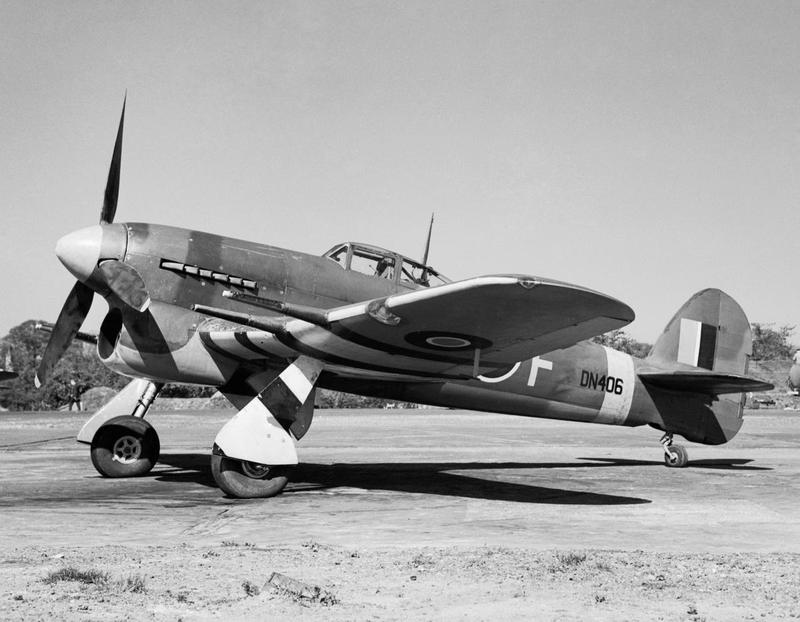
Derry returned to combat operations in October 1944, flying Hawker Typhoons on close air support missions with No. 182 Squadron. Shortly after, he was transferred to No. 181 Squadron as a flight commander. In March 1945, Derry returned to No. 182 as the squadron’s commanding officer.
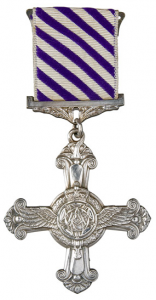
On 29 June 1945, Acting Squadron Leader Derry was awarded the Distinguished Flying Cross. His citation, published in The London Gazette, reads:
This officer has participated in a large number of sorties as air gunner and later pilot. He has at all times displayed great determination and skill and his courage has been of the highest order. In April 1945, he led his squadron in an attack against enemy gun positions. Despite intense opposition the attack was pressed home with great accuracy. The success of this operation was due in no small measure to Squadron Leader Derry’s gallant and skillful leadership. This officer has set a fine example to all.
—Fourth Supplement to The London Gazette of Tuesday, the 26th of JUNE, 1945, Numb. 37154, at Page 3405, Column 1.
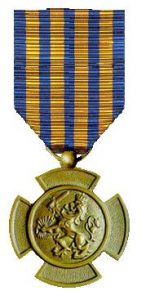
Her Majesty, Wilhelmina, The Queen of The Netherlands, awarded Acting Squadron Leader Derry the Bronzen Leeuw (Bronze Lion).
After No. 182 Squadron was disbanded 30 September 1945, Squadron Leader Derry was appointed commanding officer of the Day Fighter Leader School at the Central Flying School, flying the Hawker Tempest.
After being released from service, Derry became an experimental and production test pilot for Vickers Supermarine. In October 1947, he moved to de Havilland.
On 12 April 1948, Derry flew a de Havilland DH.108 to set a Fédération Aéronautique Internationale (FAI) World Record for Speed over a Closed Circuit of 100 Kilometers without Payload, averaging 974.026 kilometers per hour (605.232 miles per hour).¹ On 6 September 1948, Derry exceeded the speed of sound in the de Havilland DH.108. He was awarded the Gold Medal of the Royal Aeronautical Club. The Royal Automobile Society awarded Derry The Segrave Trophy, “for the most outstanding demonstration of transportation by land, air or water: The Spirit of Adventure.”
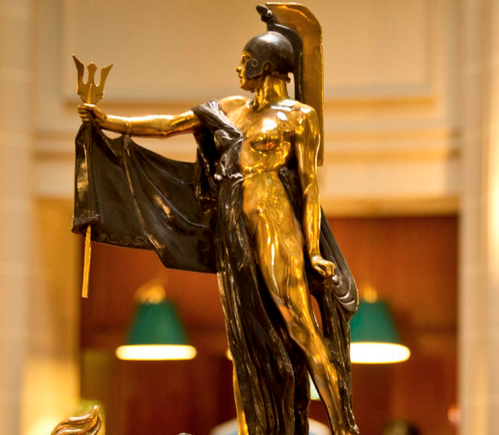
More than one member of Flight‘s staff was proud to know John Derry—a fine-looking young man and an inspiring personality—and on occasions to talk of flying and testing with him. We recall his cheerful unassuming manner, his completely straightforward and natural approach to any topic, and his firm opinion upon matters which he himself had studied and investigated. He was undoubtedly one of what we now call the new generation of test pilots, men who must be able to back their flying experience and skill as pilots with a full technical understanding.
—FLIGHT and AIRCRAFT ENGINEER, No. 2277, Vol. LXII. Friday, 12 September 1952, at Page 344, Column 2
John Derry was married with two children.
“I am never happier than when I am in the air.”
—Squadron Leader John Douglas Derry, D.F.C.
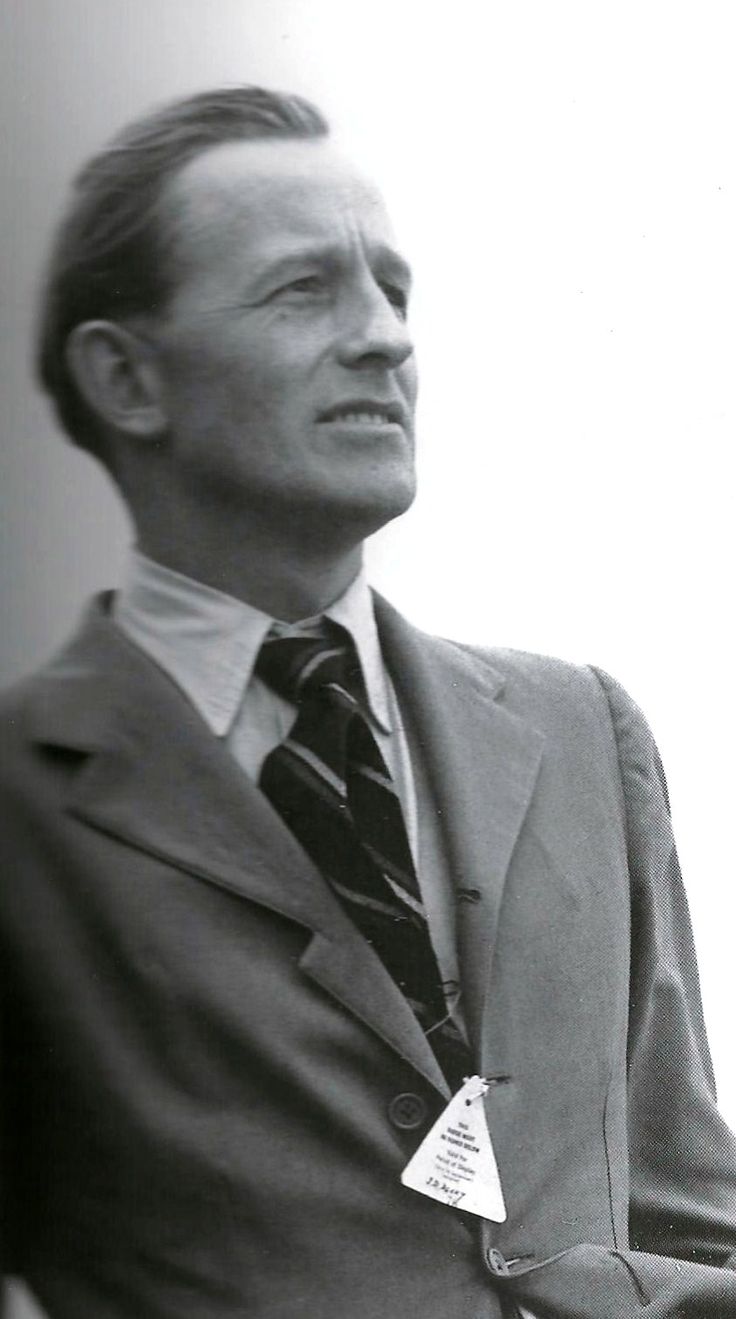
¹ FAI Record File Number 8877
© 2017, Bryan R. Swopes
